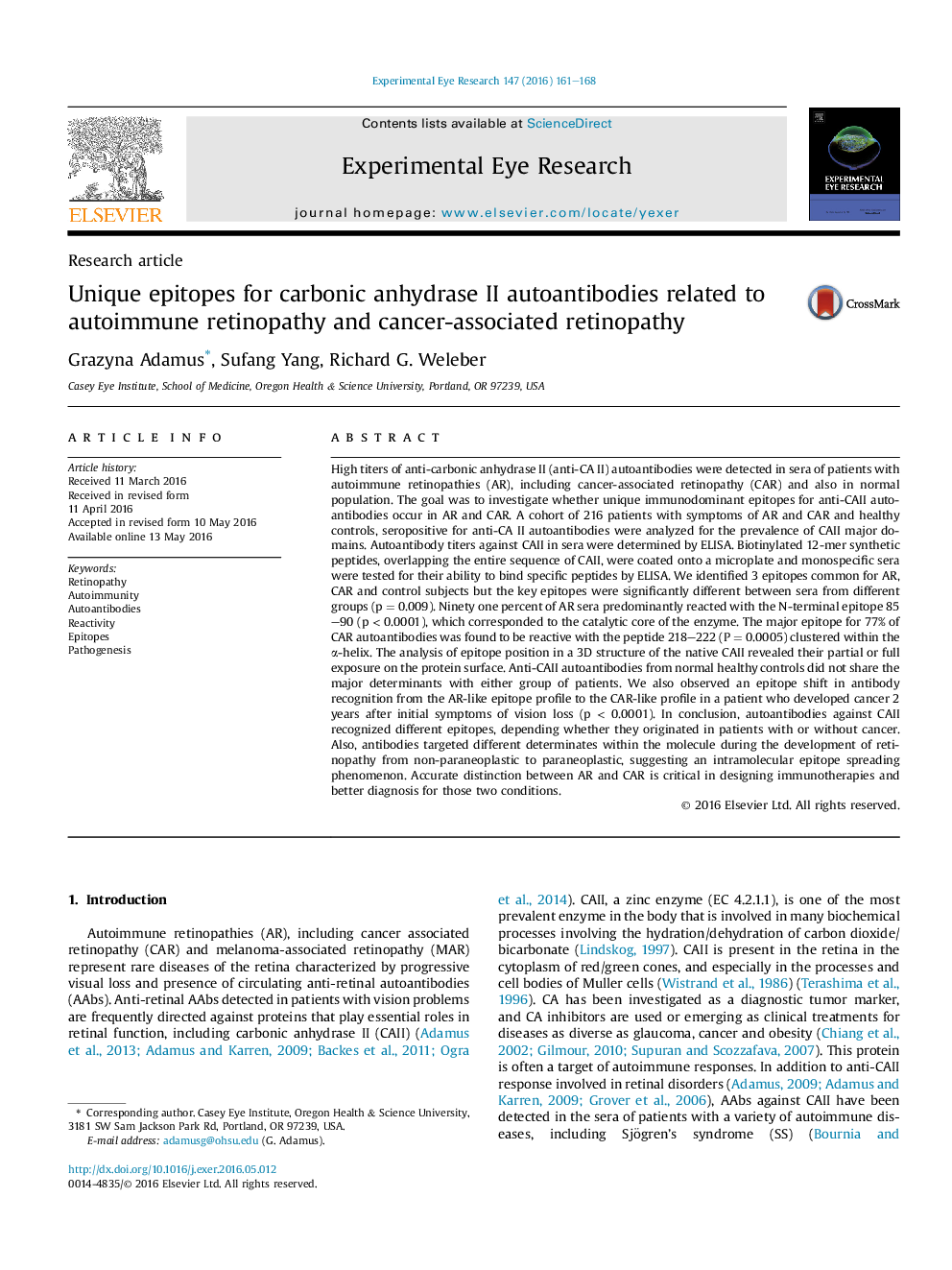| Article ID | Journal | Published Year | Pages | File Type |
|---|---|---|---|---|
| 6196247 | Experimental Eye Research | 2016 | 8 Pages |
â¢Autoantibodies against carbonic anhydrase II are present in autoimmune retinopathies.â¢Autoantibodies recognized different epitopes, depending whether they originated in patients with or without cancer.â¢The epitope position in a 3D structure of the native CAII shows a partial or full exposure on the protein surface.â¢Progression from AR to CAR involves could involve shifting from primary (AR-like) to secondary epitopes (CAR-like).
High titers of anti-carbonic anhydrase II (anti-CA II) autoantibodies were detected in sera of patients with autoimmune retinopathies (AR), including cancer-associated retinopathy (CAR) and also in normal population. The goal was to investigate whether unique immunodominant epitopes for anti-CAII autoantibodies occur in AR and CAR. A cohort of 216 patients with symptoms of AR and CAR and healthy controls, seropositive for anti-CA II autoantibodies were analyzed for the prevalence of CAII major domains. Autoantibody titers against CAII in sera were determined by ELISA. Biotinylated 12-mer synthetic peptides, overlapping the entire sequence of CAII, were coated onto a microplate and monospecific sera were tested for their ability to bind specific peptides by ELISA. We identified 3 epitopes common for AR, CAR and control subjects but the key epitopes were significantly different between sera from different groups (p = 0.009). Ninety one percent of AR sera predominantly reacted with the N-terminal epitope 85-90 (p < 0.0001), which corresponded to the catalytic core of the enzyme. The major epitope for 77% of CAR autoantibodies was found to be reactive with the peptide 218-222 (P = 0.0005) clustered within the α-helix. The analysis of epitope position in a 3D structure of the native CAII revealed their partial or full exposure on the protein surface. Anti-CAII autoantibodies from normal healthy controls did not share the major determinants with either group of patients. We also observed an epitope shift in antibody recognition from the AR-like epitope profile to the CAR-like profile in a patient who developed cancer 2 years after initial symptoms of vision loss (p < 0.0001). In conclusion, autoantibodies against CAII recognized different epitopes, depending whether they originated in patients with or without cancer. Also, antibodies targeted different determinates within the molecule during the development of retinopathy from non-paraneoplastic to paraneoplastic, suggesting an intramolecular epitope spreading phenomenon. Accurate distinction between AR and CAR is critical in designing immunotherapies and better diagnosis for those two conditions.
Graphical abstractDownload high-res image (443KB)Download full-size image
